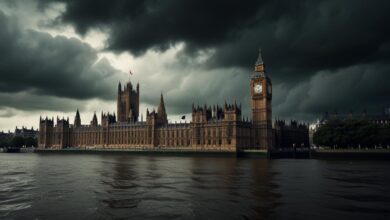NASA Selects SpaceX for ISS Deorbit Mission while Monitoring Near-Earth Asteroids

NASA has chosen SpaceX to lead the deorbiting of the International Space Station by 2030, aiming to minimise risks from space debris. Meanwhile, two large asteroids are set to pass Earth, underscoring the importance of ongoing efforts to track potential threats.
NASA Selects SpaceX for International Space Station Deorbit Mission
The International Space Station (ISS), which has been in orbit since 2000, is set to be decommissioned and deorbited by 2030. NASA has tasked SpaceX, founded by Elon Musk, with designing and constructing a “space tug” to safely deorbit the ISS. The deorbit vehicle, which is expected to cost $843 million, will navigate the ISS back into Earth’s atmosphere, where both will burn up. NASA estimates minimal risk from debris that might not completely disintegrate.
The Controlled Atmospheric Re-entry Process (CARE) will guide the ISS to decay from its current orbit of approximately 250 miles above Earth to around 200 miles. In 2030, the final descent will be initiated by the space tug, ensuring any leftover debris targets uninhabited ocean regions to minimize risk on land. Various sources, including the European Space Agency, confirm that the likelihood of human injury from space debris is exceedingly low.
The decision to decommission follows ongoing structural stresses and aging components on the ISS, with NASA ruling out the possibility of returning the station for land display due to its high costs and complexity. The station has been a collaborative effort involving NASA, Russia, Europe, Japan, and Canada.
Asteroid Near-Miss Highlighting Potential Threats
Two significant asteroids are set to pass Earth this week without posing any danger. The larger asteroid, (415029) 2011 UL21, spans 7,600 feet and will pass at a distance more than 17 times the distance to the moon at 4:14 p.m. ET on June 27. Later, on June 29, the smaller asteroid, 2024 MK, with a size ranging from 400 to 850 feet, will come within 75% of the moon’s distance at 9:46 a.m. ET.
Both asteroids will be observable with powerful telescopes under clear skies. Stargazers in the U.S. southwest and atop Hawaii’s Mauna Kea volcano will have favorable viewing conditions. The double flyby comes just before Asteroid Day (June 30), endorsed by the United Nations to raise awareness about asteroid impacts.
Efforts to track and measure such asteroids are ongoing, with NASA and the European Space Agency monitoring their paths to ensure Earth’s safety. The upcoming Near-Earth Object Surveyor spacecraft and the Vera C. Rubin Observatory in Chile will enhance the detection of potential threats.
This information provides insight into NASA’s strategies for safely decommissioning space assets and highlights ongoing efforts to monitor and mitigate asteroid threats near Earth.








